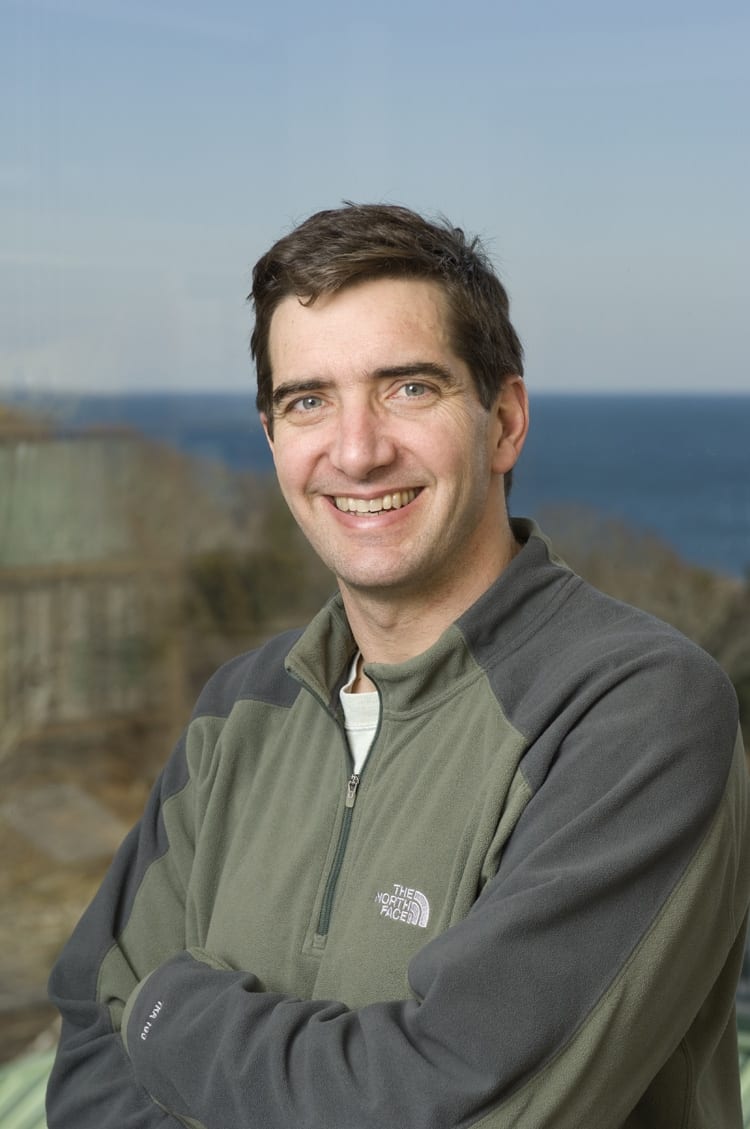News Releases
Woods Hole Oceanographic’s Avery to Serve on United Nations Scientific Advisory Board
Dr. Susan Avery, president and director of Woods Hole Oceanographic Institution (WHOI), has been appointed to a Scientific Advisory Board announced by the UN Secretary-General, Ban Ki-moon.
Read MoreDolphins Assist Scientists Studying Effects of Data-logging Tags
For scientists studying marine mammals in the wild, data-logging tags are invaluable tools that allow them to observe animals’ movements and behaviors that are otherwise hidden beneath the waves much…
Read MoreSeeing in the Dark
The Yangtze finless porpoise, which inhabits the high-traffic waters near the Three Gorges Dam in China, is highly endangered, with only about 1,000 animals alive today. Scientists from Woods Hole…
Read MoreWHOI Scientists Receive $11.6 Million to Measure Changes in Ocean Circulation
Ocean currents, in concert with the atmosphere, play a critical role in regulating Earth’s climate. Yet the complexities of how water is moved around the globe and how the strength…
Read MoreDoney receives A.G. Huntsman Award for Excellence in Marine Science
WHOI Senior Scientist Scott Doney has been awarded the 2013 A.G. Huntsman Award for Excellence in Marine Science. He will receive the award later this year at the Bedford Institute…
Read MoreEstablishing World-Class Coral Reef Ecosystem Monitoring in Okinawa
Enduring two typhoons over a three-week period in August, Woods Hole Oceanographic Institution (WHOI) researchers, working in partnership with the Okinawa Institute of Science and Technology Graduate University (OIST), have…
Read MoreStudy explores complex physical oceanography in East China Sea
Just days before a team of researchers from Woods Hole Oceanographic Institution (WHOI) and National Taiwan University set out to conduct fieldwork in the East China Sea, Typhoon Morakot—one of…
Read MoreNewly discovered ocean plume could be major source of iron
Scientists have discovered a vast plume of iron and other micronutrients more than 1,000 km long billowing from hydrothermal vents in the South Atlantic Ocean. The finding, published online Aug.…
Read MoreSummer Shark Research Heats Up at WHOI
White shark tagging expedition sets sail (July 31), Discovery Channel Shark Week segment “The Return of Jaws” features WHOI’s REMUS technology (Aug. 5), and WHOI scientists and engineers share latest…
Read MoreFirst global atlas of marine plankton reveals remarkable underwater world
Under the microscope, they look like they could be from another planet, but these microscopic organisms inhabit the depths of our oceans in nearly infinite numbers. To begin to identify…
Read MoreWHOI Announces 2013 Ocean Science Journalism Fellows
Ten science reporters, writers, and multimedia journalists from the U.S., Canada, and India have been selected to participate in the competitive Woods Hole Oceanographic Institution (WHOI) Ocean Science Journalism Fellowship…
Read MoreStudy Identifies Deepwater Horizon Debris as Likely Source of Gulf of Mexico Oil Sheens
A chemical analysis of oil sheens found floating recently at the ocean’s surface near the site of the Deepwater Horizon disaster indicates that the source is pockets of oil trapped…
Read MoreScientists solve a 14,000-year-old ocean mystery
At the end of the last Ice Age, as the world began to warm, a swath of the North Pacific Ocean came to life. During a brief pulse of biological…
Read MoreCorals cozy up with bacterial buddies
Corals may let certain bacteria get under its skin, according to a new study by researchers at Woods Hole Oceanographic Institution (WHOI) and King Abdullah University of Science and Technology…
Read MoreRobotic probe launcher may transform ocean data collection
Our understanding of the ocean and its variability relies on the tools ocean scientists deploy to collect data. One tool routinely used is the eXpendable BathyThermograph (XBT) probe, which is…
Read MoreScientists Discover Thriving Colonies of Microbes in Ocean ‘Plastisphere’
Scientists have discovered a diverse multitude of microbes colonizing and thriving on flecks of plastic that have polluted the oceans—a vast new human-made flotilla of microbial communities that they have…
Read MoreVan Mooy awarded fellowship at Southampton, U.K.
Woods Hole Oceanographic Institution (WHOI) biochemist Benjamin Van Mooy has been awarded one of two inaugural fellowships at the University of Southampton in England. The Diamond Jubilee International Visiting Fellowship…
Read MoreWHOI Welcomes Explorer and Director James Cameron and the DEEPSEA CHALLENGER
On Friday, June 14, filmmaker James Cameron delivered the DEEPSEA CHALLENGER, the only human-occupied vehicle currently able to access the deepest parts of the ocean, to Woods Hole Oceanographic Institution.…
Read MoreDeep Biosphere Harbors Active, Growing Communities of Microorganisms
The deep biosphere—the realm of sediments far below the seafloor—harbors a vast ecosystem of bacteria, archaea, and fungi that are actively metabolizing, proliferating, and moving, according a new study by…
Read MoreOcean Science and Exploration Are Capitol Hill Focus for Explorer and Filmmaker James Cameron and WHOI President & Director Susan Avery
UPDATED 6/10/13 9 P.M.—Please note new locations for events at 9:30 & 12:30 p.m., new start time for Senate hearing (3 p.m.), and additional sponsor. Washington, D.C. – Explorer and…
Read MoreNew Explanation for Slow Earthquakes on San Andreas
New Zealand’s geologic hazards agency reported this week an ongoing, “silent” earthquake that began in January is still going strong. Though it is releasing the energy equivalent of a 7.0…
Read MoreAcidifying oceans could spell trouble for squid
Acidifying oceans could dramatically impact the world’s squid species, according to a new study led by Woods Hole Oceanographic Institution (WHOI) researchers and just published online in the journal PLOS…
Read MoreHandbook Helping Bay State Residents Prepare for Coastal Hazards Released
With the official start of hurricane season set to begin June 1, the Massachusetts Homeowner’s Handbook to Prepare for Coastal Hazards is now available, marking National Hurricane Preparedness Week. While…
Read MoreScientists Find Possible Solution to an Ancient Enigma
The widespread disappearance of stromatolites, the earliest visible manifestation of life on Earth, may have been driven by single-celled organisms called foraminifera. The findings, by scientists at Woods Hole Oceanographic…
Read More


